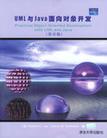UML与Java面向对象开发
出版时间:2004-4 出版社:清华大学出版社 作者:泰芬哈特 页数:468
Tag标签:无
内容概要
如果你是繁忙的职业软件分析师,或者是从事大项系统开发的分身乏术的开发人员,而且没有充裕的时间去参加面向对象技术的课程,那么你完全可以凭借本书去掌握UML与Java结合的面向对象技术。本书不仅可用于课堂教学,也适用于自学,它的两位作者都是业界知名的专家,相信本书一定有助于你全面了解OO分析、OO设计、OO编程以及它们之间的差异。
本书特色:
·从Java实现的角度详细讨论了面向对象的主要原则;
·深入介绍了如何借助用例(Use Case)来开发规范模型;
·全面介绍了可以根据组织的具体需求进行定制的各种分析方法,并为初学者推荐最易上手的方法;
·通过大量实例详细描述了如何捕获动态行为及其对应的设计和实现;
·详细介绍了Java标准扩展(JSE),包括可与其他高级Java课程结合学习的实例;
·描述在Java中如何实现不同的关系,包括聚合与关联。
作者简介
Richard C.Lee,在软件开发与管理方面有35年以上的经验。他从事或管理过的项目包括电子出版前沿技术开发、嵌入式系统、大型IMS项目、多媒体项目、运营支撑系统、过程控制系统、事务处理系统、交换机系统等。作为面向对象的早期实践者,他目前致力于使更多的面向对象的项目获得成功。
书籍目录
Preface Object-Oriented Technology Why Unified Modeling Language? Why Java? Our Approach to Object-Oriented Technology Organization of the Book Using This BookAcknowledgments1 Managing Complexity with Abstraction Complex Systems System Development Is Modeling A Strategy for Modeling Abstraction Mechanisms Basic Data Types Functions Modules Abstract Data Types Objects Class Generalization/Specialization Polymorphism Interface Reflection Service Activation Abstractions Function Call Event Processing(Asynchronous Communication) Message Passing(Synchronous Communication) Subscription(Asynchronous Communication) Processing Control Abstractions Single Program Execution Multitasking Sequential Execution Multithreading Relationships Associations Aggregation Behavior Static Behavior Dynamic Behavior Rules2 The Object-Oriented Paradigm The Object-Oriented Paradigm What Is an Object? What Is a Class? Principles of Object-Orientation Principle 1.Encapsulation Principle 2.Information Hiding Principle 3.Message Passing Principle 4.Late Binding Principle 5.Delegation Principle 6.Class/Instance/Object Principle 7.Generalization/Specialization without Polymorphism Principle 8.Generalization/Specialization with Polymorphism Principle 9.Relationships Principle 10.Interface/Instance/Object Principle 11.Generalization/Specialization of Interfaces Principle 12.Reflection Principle 13.Multithreading Object-Oriented Model of Computation3 Building a Specification Model Introduction to Use Cases System Actors Use Cases Use-Case Bundles Documenting Use Cases Use-Case Diagram Sequence Diagram:Documenting the Details Textual Description Guidelines for Developing Use Cases Avoiding Analysis Paralysis Identifying Actors Identifying High-Level and Essential Use Cases Establishing Use-Case Bundles Developing Use-Case Details Identifying Supporting Use Cases Contracts Recommended Approach4 Finding the Objects5 Identifying Responsibilities6 Specifying Static Behavior7 Dynamic Behavior8 Identifying Relationships9 Rules10 The Model11 Design12 Java Fundamentals13 Implementing Class and Interface14 Implementing Static Behavior15 Implementing Dynamic Behavior16 Implementing Generalization/Specialization17 Implementing More RelationshipsA Unified Modeling LanguageB Java Language SummaryC How the Java Language Differs from C and C++BibliographyIndex
图书封面
图书标签Tags
无
评论、评分、阅读与下载
